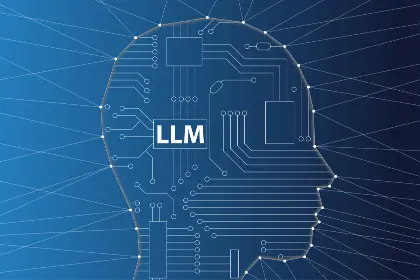
Access denied.
Your profile does not have permission to view this content.
Terms and conditions of use
Please read the IMPORTANT INFORMATION below before proceeding, as it explains certain restrictions on the distribution of information available on this website.
This website - hereinafter the "Site" - is operated by RAM Active Investments S.A. - hereinafter "RAM".
An investment in the RAM funds should only be made after reading carefully the details relating to the sale restrictions that can be found in documents such as Key Investor Information Document (KIID), the management regulations, latest prospectuses, annual and semi-annual reports. These documents can be all be obtained free of charge from the funds' representatives in each country where the funds are incorporated or registered. The latest versions of the prospectus, Key investor information Documents (“KIIDs”), annual report and semi-annual report translated into the language of your country of residence conform with any requirements laid down in the laws or regulations of that country.
The value of investments may be subject to fluctuations and, under certain circumstances, investors may not get back the full amount invested. Past performance is not an indication or guarantee of the future performance of the investment. The performance shown does not take account of any commissions or costs charged when subscribing to or redeeming units. For hedged shareclasses, only the investment fund's consolidation currency is hedged into the shareclass currency. Finally, changes in foreign-exchange rates may also cause the value of investments to go up or down. No information or material at the Site is to be relied upon for the purpose of making or communicating investments or other decision.
No solicitation/sales restrictions
The Site not intended for legal entities or individuals who by virtue of their nationality, registered office, place of residence or for any other reason are governed by a legal system which prohibits or restricts in particular the publication of the content of the Site, access to the Site, the activities of a foreign financial services provider or the approval of products (such as investment funds).
This prohibition applies in particular to citizens of the United Statesor to persons who are residents of this country. Access to the Site is prohibited for persons subject to any such restrictions.
Other people using the Site accept the following rules.
This notice and the rules contained in this document are intended for all users of the Site.
The content of this Site is purely informative, and is not aimed at promoting the services of RAM. It is intended to provide general information about the company. No information appearing on this Site shall be deemed as a financial, legal, accounting, tax or investment advice or an offer for services or products, in particular investment funds, from RAM, nor as an offer or the solicitation for a purchase or sale of securities or of any other investment product. Nothing on this Site shall be deemed as a public call nor selling, whatever its form, qualification or denomination nor shall it be construed as a proactive behaviour from RAM towards third parties. Every contact with the Company from third parties must be considered as the latter's sole initiative.
Neither the investment funds nor RAM Active Investments SA provide investment advice to, or receive and transmit orders from, investors in the investment funds. They do not carry on any other activities with or for such investors that constitute "investment services" or "ancillary services" for the purposes of the Markets in Financial Instruments Directive.
Limitation of liability
RAM makes every effort to ensure that the information on this Site is accurate and complete at the time of its inclusion. However, although this information is obtained from sources that are believed to be reliable, RAM does not guarantee, explicitly or implicitly, that it is accurate, reliable, up-to-date or exhaustive. The information and opinions contained in the RAM Site are provided for personal use and informational purposes only and are subject to change at any time without notice. Nothing contained on the RAM Internet Site constitutes investment, legal, tax or other advice nor is to be relied on in making an investment or other decision. Any investment decision should be based on appropriate professional advice specific to the investor's needs. RAM assumes no responsibility for any direct or indirect loss or consequential loss suffered in connection with use of information contained in this Site.
The latest versions of the prospectuses, simplified prospectuses, annual reports and semi-annual reports of the investment funds are the only versions deemed to be official fund publications on which investment decisions may be based.
These documents may be obtained free of charge from the investment fund representative in the countries of domicile of the funds in question or in the countries in which the funds are registered.
Products and services described on this Site may be subject to restrictions for some persons or in some countries. It is incumbent upon interested persons to take all appropriate steps to ensure that they do not solicit RAM for products and services which, due to the laws of their native country, or of any other country they may be concerned with, may be forbidden or require special authorization for such persons or for the company. It is the responsibility of readers of this disclaimer to ascertain that access to this Site is authorized from the country from which he/she is connecting.
Under no circumstances, including but not limited to negligence, shall RAM be liable for any special or consequential damages that may result from the access to or use of, or the inability to access or to use, the materials at the Site.
Use of the Site shall be made subject to the laws of Switzerland, which shall exclusively govern the interpretation, application and effect of all the above conditions of use. The courts of Geneva shall have exclusive jurisdiction over all claims or disputes arising in relation to, out of or in connection with the Site and its use.
Investment funds
This Site contains information on investment funds registered and managed in different jurisdictions. It is your responsibility to ascertain that you are authorised to access to investment funds pages.
You will be required to indicate your place of residence before being allowed to access information relating to the said investment funds. Please note that access by private investors to the said information shall be limited to the investment funds authorized for sale to the public in their country of residence. Consequently, your access is limited to funds registered for sale in your country of residence.
The “Investment Funds” pages are not addressed to U.S. Persons. RAM investment funds have not been or will be licensed for marketing, offer or sale to the public in the United States in accordance with the US Investment Company Act of 1940 or the US Securities Act of 1933.
The above-mentioned investment funds must not in any circumstances be offered or distributed: (i) in the United States of America, in any of its States or in any other political subdivision of the United States of America, or (ii) to or on behalf of or for the benefit of any United States Person (as defined in Regulation S of the "United States Securities Act" of 1933).
Singapore
For Singapore investors, the investment funds mentioned in this website are not authorized or recognized by the Monetary Authority of Singapore and are not allowed to be offered to the retail public. They are exclusively intended for (i) institutional investors as defined under Section 304 of the Securities and Futures Act, Singapore Statute Cap. 289 ("SFA"), (ii) to a relevant person pursuant to Section 305(1), or any person pursuant to Section 305(2), and in accordance with the conditions specified in Section 305, of the SFA, or (iii) any other person otherwise pursuant to, and in accordance with the conditions of, any other applicable provision of the SFA.
United Kingdom
All RAM entities are based out of the United Kingdom and therefore not covered by the standards and regulations for investor protection issued by the Financial Conduct Authority. UK residents have no right to claim compensation through the Financial Ombudsman Service following losses resulting from failure to comply with certain obligations arising from the relevant regulations.
Tax
Tax treatment depends on the personal circumstances of the investor and is subject to change. Investors are advised to seek specific professional advice before making any investment decision.
Brands and copyright
RAM Active Investments SA (RAM) and the other RAM Group brands mentioned on the website are registered trademarks or service marks of RAM. Unless otherwise indicated, the entire website is protected by copyright.

.png)




.png)